What is the maximum amount of protein you can eat on a ketogenic diet? Wondering how many grams of protein on the keto diet is allowed?
We will tell you the truth behind the protein myth in a ketogenic diet and explain why you should not be afraid of too much protein in a keto diet.
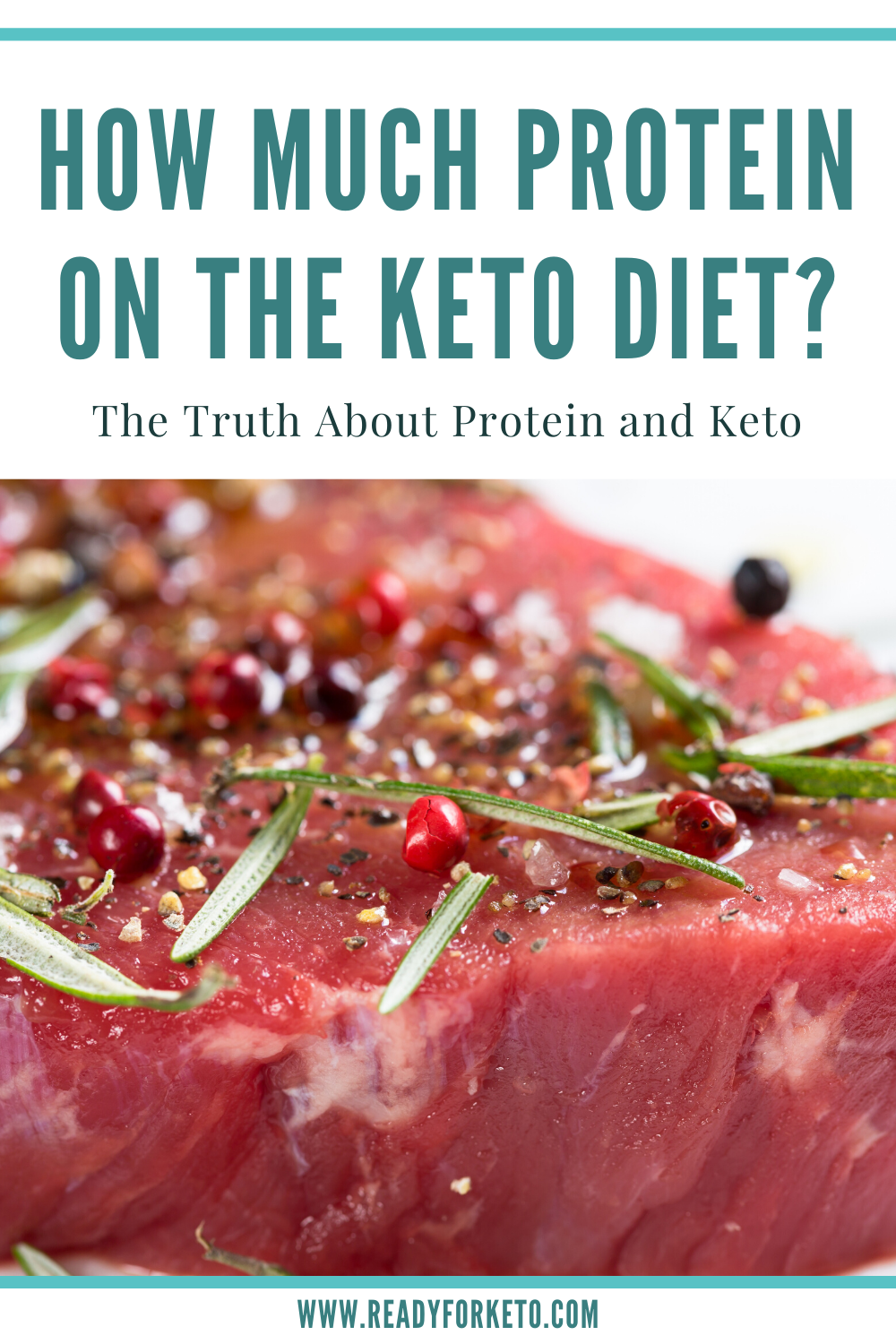
What if everything you thought you knew about protein in a ketogenic diet was actually wrong?
What if the secret of weight loss in a keto diet is not really fat, but protein?
It’s easy to understand why healthy fats are the stars of a ketogenic diet, but many keto experts recommend far too little protein to support lean muscle mass and recovery.
And your body uses protein for much more than just muscle building.
Read on to find out how you can lose more weight, improve your body composition and balance your blood sugar levels – all while increasing your protein intake with Keto.
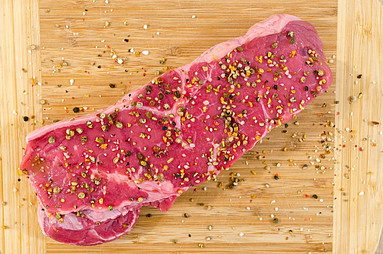
What Does Protein Do in Your Body?
There are over 10,000 different proteins in your body – from bones, muscles and connective tissues to hair, skin, nails and the lining of your gastrointestinal tract and blood vessels.
When your body digests protein, it is broken down into molecules called amino acids, some of which are essential amino acids that your body needs but cannot make itself.
Amino acids are often called “the building blocks of life” because they are involved in many processes:
- Muscle building
- Maintaining the structure of your muscles, tissues and organs
- Production of enzymes
- Hormone production
- Formation of neurotransmitters
- Metabolism of food and transport of nutrients
- Production of antibodies to strengthen the immune system
- Oxygen transport in the blood via hemoglobin
Your body can’t store protein in the same way that it stores carbohydrates and fat, so you need to make sure that you consume the right amount of protein every day (more on this later).
But protein has a few more benefits and tasks:
- Protein helps you feel full. Protein is very nutritious, filling and takes a while to be digested. This is especially useful if you are trying to lose weight without constantly being hungry.
- Protein builds extra muscle that burns more calories even if you don’t exercise. It will be easier for you to reach a calorie deficit and lose stubborn fat if you have more muscle mass.
You probably won’t weigh less when you start building muscle and losing fat as your body composition changes for the better.
You will, however, look more defined the more you exercise if you eat enough protein.
- Protein is essential for post-workout recovery because every time you exercise your muscles, muscle fibers break down and need protein to repair them and make your muscles bigger and stronger.
So if you know the importance of protein, why would it be a bad thing to eat too much of it on a ketogenic diet?
The Keto-Protein Myth: Gluconeogenesis
Yes… gluconeogenesis is a metabolic mechanism by which the liver and kidneys produce glucose from non-carbohydrate sources such as protein.
No… you don’t have to worry about proteins kicking you out of ketosis.
Your body must maintain a certain blood sugar level at all times, whether you are in ketosis or not.
However, your body is perfectly capable of producing the small amount of glucose it needs to function without you having to inject 5 glucose to give it that sugar.
If you remove carbohydrates and sugars from your diet via a ketogenic diet or intermittent fasting, your body panics and looks for glucose everywhere. The first thing it will do is empty your glycogen-glucose stores, because they are the easiest backup source.
Only then can your body (especially your liver) turn to other non-glucose energy sources to produce the desired glucose (since they are not provided by food).
This process is called gluconeogenesis, and it is not as dangerous for your ketosis as many people claim.
What Is Gluconeogenesis?
Gluconeogenesis literally means “to produce new glucose”.
Why does gluconeogenesis (GNG) even exist?
Your body actually needs some glucose to function. Even if you deliberately limit carbohydrates in a ketogenic diet, your body’s first instinct is to protect yourself from a glucose shortage.
Think of gluconeogenesis as the backup source of glucose in your body. It occurs when your body produces glucose from protein because it does not get enough carbohydrates from food.
The general concern among keto eaters is often that if they eat too much protein at keto, they run the risk that this protein will turn into sugar and increase blood sugar levels.
Theoretically, this could then raise your blood sugar level to the point where you are thrown out of ketosis.
But is that really true?
Does too much protein consumption really affect the ability to get into ketosis? How much protein is too much? We will now get to the bottom of this very question.
What Science Says About Gluconeogenesis…
Studies show that digesting protein stimulates the production of glucagon, a hormone that helps break down glycogen in the liver into glucose.
This means that protein could increase the chances of GNG happening if you eat a very low-carbohydrate diet.
However, your body also sends out insulin to handle all the glucose. So it actually releases glucose from the blood and for the average person it makes little difference.
And there is also some evidence that gluconeogenesis releases glucose so slowly that it would be difficult to achieve high blood sugar levels after only one high-protein meal.
So protein should not affect your blood sugar levels unless you are a diabetic or have insulin resistance or insulin sensitivity.
To test the theory that half of the dietary protein turns into glucose, scientists in one study gave participants 160g of protein (which is a fair amount) and expected 80g of glucose to be produced in return.
They measured blood sugar levels after the participants had eaten lean beef, eggs and even casein protein, but the effect on blood sugar levels was still the same: zero.
In this study, the researchers wanted to know how protein intake contributes to the body’s own glucose production.
So they let the participants fast overnight, and the next day the volunteers ate a protein-rich meal without carbohydrates. The scientists added a tracking substance to the protein source, in this case eggs, so that they could observe it during the digestive process.
Even after a night without food and a protein-rich meal without carbohydrates the following morning – which is an ideal situation for GNG – the blood sugar level remained relatively stable.
This study shows that dietary protein contributed very little to total glucose production – even though it created ideal conditions for gluconeogenesis to occur.
In addition, the scientists discovered the following within eight hours of protein intake:
- The liver of the participants produced about 50 g glucose (presumably by digesting this protein)
- Only 4g of the glucose formation came from the protein (this corresponds to 8%)
- The protein was not enough to raise blood sugar levels
This study consisted of two parts: an overnight fast and a high protein meal.
So how does fasting alone contribute to gluconeogenesis?
Studies on fasting show that half of the glucose released into the bloodstream is the result of GNG.
However, five participants who followed a ketogenic diet for 11 days noticed only a small increase in glucose production by GNG after nighttime fasting. This 14% increase was equivalent to a rise in blood glucose of less than 1 gram of glucose per hour.
So, what does all this teach us?
The Truth About Gluconeogenesis and Keto
In the same way that you cannot claim to be in ketosis just because you eat a lot of fat; you are not thrown out of ketosis by gluconeogenesis just because you consume a lot of protein in keto.
Gluconeogenesis is a slow, steady process at a constant rate.
An increase in blood glucose after eating a high-protein meal does not automatically mean GNG, because it usually takes longer for your body to release glucose from protein.
Any increase in your blood sugar level is most likely due to your liver releasing hormones to digest this protein.
One of the most important facts to keep in mind is that GNG does not happen just because it can; GNG only occurs when it is necessary.
Studies show that more protein in the diet does not increase the rate at which GNG occurs.
If gluconeogenesis were a supply-driven process, an excess of protein would trigger the onset of gluconeogenesis each time.
But just because your body has too many amino acids doesn’t mean they are actually converted to glucose.
If your body doesn’t need that glucose, your body won’t look for it or make it from something else.
By the way, gluconeogenesis can also happen with fat – not just protein.
Studies show that over 90 % of all cases of GNGs are caused by the following:
- Lactate and glycerol, which the body can break down from triglycerides (stored fat) and glycogen (stored carbohydrates) when there is insufficient glucose.
- Glutamine and alanine, amino acids found in proteins throughout the body, are also preferred sources of GNG when carbohydrates are low. Your kidneys like glutamine, but your liver prefers alanine.
In reality, the process of GNG is extremely rare when talking about healthy bodies under normal conditions.
So you don’t have to worry about too much protein in a ketogenic diet.
However, there is a very small window of time when gluconeogenesis can actually be a problem with keto.
When Does Gluconeogenesis Occur?
A ketogenic diet trains the body to use fat as an energy source instead of glucose.
But it can take up to three weeks for your body to reach full ketosis.
During this transition (before you are properly in ketosis), your body tends to convert amino acids into glucose.
It usually takes between 18 and 72 hours for your body to use up all its glycogen stores. If there are none left, amino acids are the ideal fuel source for your body.
At this point, your body is still used to breaking down glucose and is not very efficient at burning ketone bodies. For this reason, your body will focus a little more on protein and fat for glucose in the first phase of keto than when you are fully fat adjusted.
So the first three weeks of your ketogenic diet are the most vulnerable to gluconeogenesis.
Over time, your body will discover that protein and amino acids are a poor long-term fuel source for GNG, and that ketones are a much more efficient energy source.
Again, just because protein can be converted to glucose doesn’t mean it will. If your body needs glucose, it will produce any small amount of it that it needs itself.
As soon as the need for glucose decreases and your body realizes how fantastic it is at fat, gluconeogenesis decreases as well.
Consuming enough protein in keto is therefore the key to getting to the full state of ketosis, your body will recognize this too.
If you don’t eat enough protein, your body may start converting the protein from your muscle mass into glucose.
In order to avoid this muscle loss, you should therefore consume sufficient protein even with a ketogenic diet and not be afraid of gluconeogenesis.
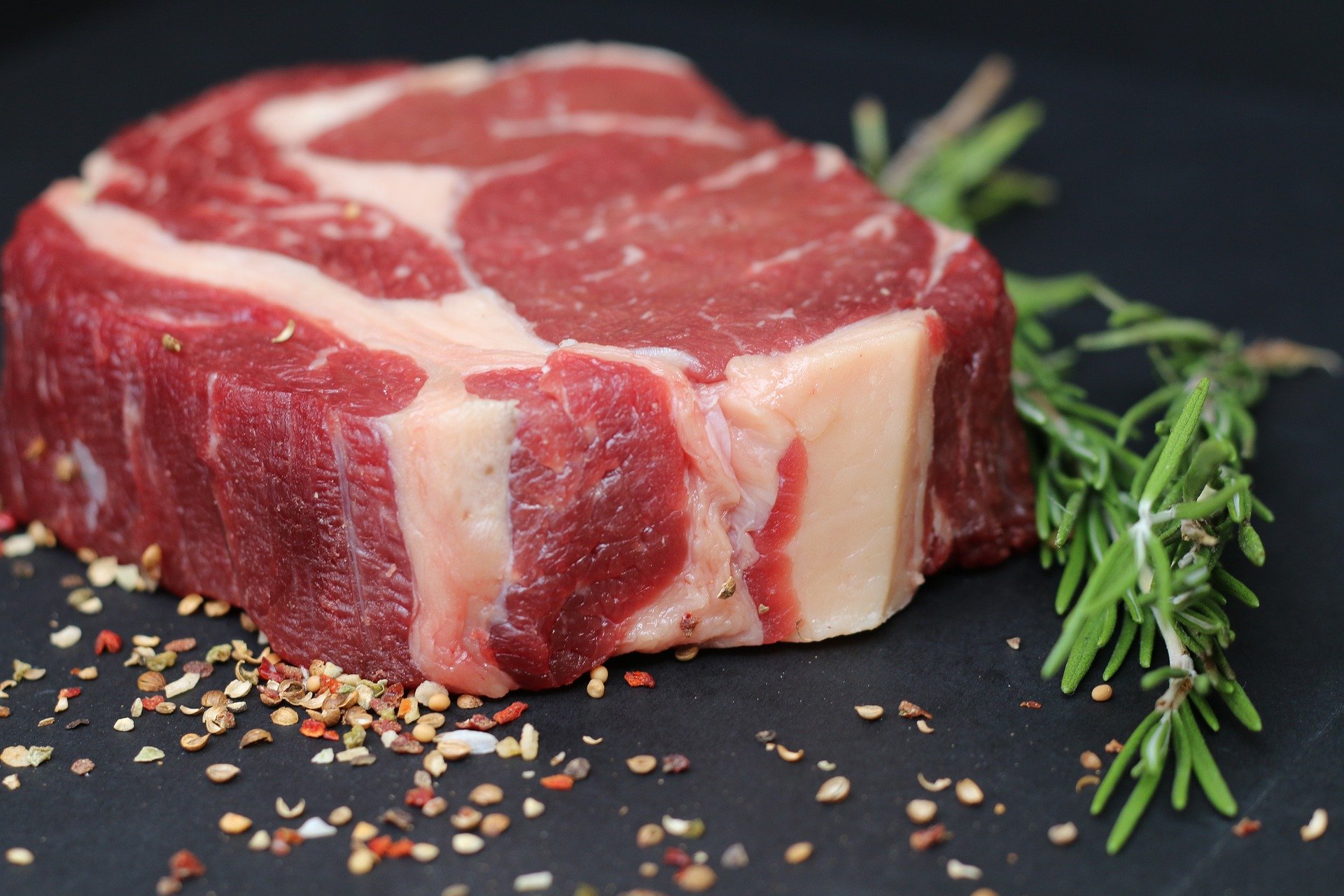
Do You Eat Enough Protein in Your Ketogenic Diet?
So as you now know, you might experience some gluconeogenesis if you are just starting a keto diet.
But it will happen on a much smaller (and more appropriate) scale once you are fat adjusted.
It is much more likely that you will not eat enough protein when on a keto diet. And this common mistake could sabotage your energy and weight loss goals.
The thing is, you may not even notice that you’re not eating enough protein. That’s because when you switch to Keto, you eat more satisfying fat and your hunger will automatically decrease a little with Keto.
That’s why it’s important to calculate your ideal protein intake and make sure you get enough every day to support your goals and activity level.
Signs You’re Not Eating Enough Protein
Here are the signs that you’re not eating enough protein during the keto diet:
- You feel weak and tired all the time.
- You suffer from brain fog, even though you add MCT oil to your keto coffee.
- You notice thinning hair, peeling skin and weak, brittle nails.
- You have a constant hunger and craving for sweets due to the lack of satisfying protein in your diet.
- Weight gain or inability to lose weight because you have more body fat than fat-burning muscle mass.
- You are often ill because you have fewer protein-producing antibodies that strengthen your immune system.
- Swollen legs, ankles and feet caused by fluid accumulation in your tissues, which should be transported by proteins through your blood vessels.
- Loss of muscle mass, which also slows down your metabolism so that you burn fewer calories at rest.
So, let’s get this straight: If you follow a ketogenic diet and successfully lose weight, have better cognitive performance and more physical energy with keto, then your current protein intake may be just right.
But if you notice any of the above symptoms or feel that your ketogenic diet is not working properly, you can start experimenting with your protein intake.
If you have followed macros that start with fat instead of protein – or rely on general percentages instead of your body’s specific needs – this is the first change you should make today.
Need help getting started? Check out the 28-Day Keto Challenge.
Signs You’re Eating Too Much Protein
Studies have clearly shown that there are no benefits in eating too much protein at once, when the body does not need it at all – in fact, it can even cause negative side effects, such as:
- Indigestion, constipation or diarrhea
- Kidney damage
- Dehydration
- Fat gain
- Possibly lower ketone levels; since excess protein is mainly used for energy, your body may not produce as many ketones because it needs to consume this protein first.
Why Your Macros Might Be Wrong
Many keto macro calculators rely on the usual breakdown by percentage:
- 70-80% of your calories from fat
- 20-25% from protein
- 5-10% from carbohydrates
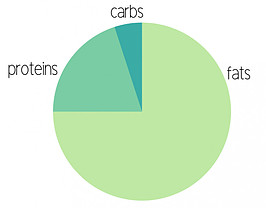
These percentages were calculated for a therapeutic keto diet developed for epileptic patients. It may work for some people, but most healthy adults need more protein.
If you want to lose weight and build or maintain muscle with a keto diet, you must first prioritize your protein levels.
Start with how many grams of protein your body needs just to perform its daily functions.
After you have determined your ideal protein intake, it is time to determine your carbohydrates. The typical range in a ketogenic diet is 25-50g of net carbohydrates per day, depending on your individual needs.
The last piece of the puzzle should be fat.
You need to find out how much fat you should eat in your ketogenic diet to achieve your goals (e.g., weight loss vs. maintaining weight).
Since you need to cut down on carbohydrates a lot, many people think that eating more dietary fat is the answer.
But if you don’t lose weight fast enough with Keto, you may be eating too much fat.
If you consume too much dietary fat, your body will focus on burning that dietary fat – not on burning your own fat stores, i.e. body fat.
So if weight loss is your goal and you have a significant amount of body fat, you do not need to add large amounts of dietary fat to your meals. This means that you should eat enough protein in the first place before drowning your plate in olive oil.
Protein is the secret weapon in any diet because it helps you eat fewer calories and build more fat and calorie-burning muscle.
In the next section, I’ll show you how you can easily find out your optimal daily protein intake.
(NOTE: Need help to determine which macros are right for you? Check out the 28-Day Keto Challenge! The challenge includes a Keto Virtual Assistant to help you figure out your ideal macros!)
How to Calculate Daily Protein Intake
Protein intake is not a one-size-fits-all and varies slightly from person to person.
Your protein requirement depends on several factors:
- Age
- Gender
- Size
- Weight
- Activity level
- Body composition (i.e. lean body mass or your total weight minus your body fat)
To determine your optimal amount of protein in a ketogenic diet, simply follow the next steps.
Calculation
To use this method, you must first determine your body fat percentage.
You can estimate your body fat percentage from pictures or better yet, calculate it here.
Once you have determined your body fat percentage, all you have to do is find out your lean body mass (LBM).
Take your total weight (in kg) minus your body fat to get your lean body mass.
For example, if you weigh 90 kg and have 30% body fat, your LBM is about 63 kg.
The calculation looks like this:
First of all, 90 kg x 0.3 = 27 kg body fat.
Then: 90 kg – 27 kg = 63 kg fat-free body mass
Now, to fill out the rest of the equation, use a multiplication factor based on your lifestyle:
- 1.3 for sedentary activity levels (the minimum protein intake in general)
- 1.5 for light activity levels
- 1.7 for moderate activity levels
- 2.0 for a very active lifestyle
- 2.3 for extremely active people (the maximum average protein intake)
If you are not sure which factor to use, you can always experiment with your ideal protein intake range.
Using our example, take your lean body mass (63 kg) and multiply it by 1.3 to get your minimum protein intake (63 x 1.3 = 81.9 g).
Do the same for your maximum protein intake (63 x 2.3 = 144.9 g).
The optimal amount of protein in this case is between 82-145 g protein per day.
Simply divide this amount between your keto meals and snacks throughout the day to ensure you get an even supply instead of an excessive protein load all at once.
Remember to stick to the upper end of your protein intake range during your busiest days and the lower end for less active ones.
A High Protein Ketogenic Diet
You don’t need carbohydrates to build muscle, but you probably need more muscle building protein than what a normal ketogenic diet provides.
In this case, you may want to try a high-protein ketogenic diet that some strength athletes swear by.
A high-protein keto diet looks more like this:
- 60% of calories from fat
- 35% from protein
- 5% of carbohydrates
Since we are concerned with using accurate numbers to determine your protein intake, bodybuilders can increase their multiplication factor to about 2.7 and 4.5 when they are in ketosis.
Back to our example: So our 90 kg person with 63 kg of lean body mass could eat between 170-283g of protein every day if they train very hard and want to build more muscle mass.
Even though you don’t need to be afraid of gluconeogenesis with keto, you really shouldn’t eat more protein than your body actually needs.
Protein Intake and Ketone Levels
You will find that your blood ketone level drops if you eat a lot of protein, but this does not mean that you are not in ketosis or that you are not losing weight.
Don’t eat too little protein just to keep your ketone level in the “optimal” range.
Ketones don’t break down fat; they just indicate that your body is actively breaking down your fatty acids and that you may be on the way to ketosis (or already in ketosis).
You can have high ketone levels and still not lose an inch of waist circumference or gain one gram of lean muscle mass.
The best way to see how your body reacts to proteins is to act like a scientist and observe yourself.
Observe, Follow, and Learn
First, calculate your ideal amount of protein – as described above.
Then follow your food intake and measure your ketone levels daily after eating different portion sizes. Also, keep an eye on your energy and performance levels at the gym.
Gluconeogenesis could be a problem if you consume too many protein shakes, eat steaks at every meal, and are not physically active or not going to the gym.
But for the average keto dieter who only exceeds his protein macro by 5-15g, gluconeogenesis after the adaptation phase is no cause for concern.
Because protein is so important to your body’s health and your weight loss goals, here are some of the best sources of protein in a keto diet.
The Best Protein Sources in a Ketogenic Diet
A typical serving of protein is between 110-170 grams for women and 230 grams for men.
It is essential to choose high quality keto protein sources found in natural foods and whole foods, such as:
- Fatty parts of organic meat, including beef, pork, lamb, game, and poultry.
- Fatty, wild caught, sustainable seafood such as tuna, salmon, halibut, cod, trout, mackerel, catfish, sardines, anchovies, shrimps, and lobsters
- Eggs, high-fat, low-carbohydrate dairy products, nuts and seeds
- Organ meat like heart, liver, tongue, and kidney
- Supplements such as collagen protein, whey protein isolate, and other ketogenic protein additives
Watch out for certain meat products, high-sugar protein bars and questionable protein powders. Many of them contain artificial ingredients, added sugar and other hidden carbohydrates.
Conclusion
Now you have learned why you should focus on protein and not just fat in a ketogenic diet.
Everyone who follows a ketogenic diet knows the health benefits of good fats.
But it’s time to recognize protein as the equally important macro nutrient that it is. If you follow a ketogenic diet for more fat burning and muscle building, you may want to consider how much protein you eat per day.
The keto myth that too much protein in a ketogenic diet leads to gluconeogenesis is simply not true and has already been disproved by studies.
There is no evidence that protein is immediately converted into glucose when you eat keto. Instead, there is a wealth of literature on how useful protein is in curbing appetite and promoting weight loss.
So determine your ideal protein intake for your ketogenic diet.
Then add a few high-protein keto meals to your keto nutrition plan to make sure you reach your daily protein intake.
Regular exercise can also help you get into ketosis faster and bring you a big step closer to the health benefits of keto.
Thanks for reading!
Anna
www.readyforketo.com

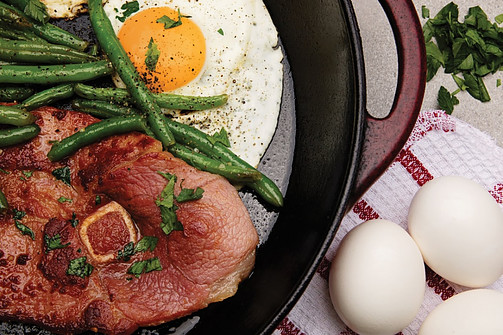

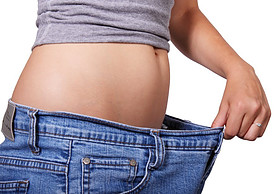


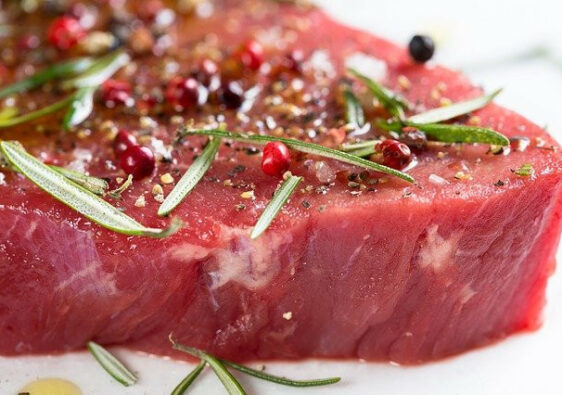
I had no idea how much protein should I eat while on a diet, thanks to this article!
I’m glad to hear! 🙂 Thanks for reading!
Thank you very much this article is very informative and details for keto diet.
I have learnt a lot about Gluconeogenesis.
I have also learnt to recognize the signs of lack of protein
Your article is really helpful and well-written. My friends are on ketogenic diet, many of them don’t have enough carbs intake. They thought that with ketogenic diet, they don’t have to intake so much carbs. I think it’s not a good idea having not enough carbs. Carbs is also essential for our body.
Your guide will be helpful for those who are on ketogenic diet. And those who want to lose weight but don’t know how to start. I will share this link with them.
I have learned so much from your article on protein and the keto diet, and even though I have heard of the keto diet I never really took the time to learn about it before now. I do know when I was not getting enough protein my body felt terrible, and I did lose a lot of weight mainly muscle mass. So I can verify what you are saying is true, and so your readers should listen to you
Thank you
Jeff
Thanks, Jeff!
Hi Anna. Your article is full of information. I can find everything I want to know here. Thank you for your sharing!
Hello Anna,
What an exceptionally generous article this really is – to be honest, I think you’ve done yourself a bit of an injustice, since you could have split this up in to two or even three different posts. I’m interested in knowing more about the keto diet element of losing weight, and this piece of writing is pretty helpful. Thanks for taking the time to produce something that is truly worthwhile.
Thanks, Simon! 🙂
Hi Anna
This is a very informative article. I followed your link to calculate BMI and was able to figure out mine. I have been trying to lose weight but it is such a slow process. I am interested in trying the Keto diet but am unsure as to how to get started. I began eating no wheat products, potatoes, rice or pasta since October and have managed to lose 25 lbs and 5.5 inches so far. Have about 16 lbs and 5 inches to get to goal. How should I begin? Where do I find out what are macros and how calculate them? Thanks for posting this.
Deborah
Hi Deborah,
Weight loss is slow! The nice thing about the keto diet, is that most people start seeing weight loss results in the first few weeks!
Check out my Beginners Guide for the Keto Diet! It should help get you in the right direction 🙂
Thanks for reading!
Anna
Hey Anna,
Wow. A very informative and extensive article.
I am trying to stick to my new year’s resolution of trying to get fit, eat better, and also live better. I’ve tried to cut out the carbs as much as I can and basically ate nothing but protein. So far it seems to be working, but I have found small rashes on my body. I researched if the amount of protein I was eating was due to this, and it seems that it is.
Have you ever seen anything like that before? Rashes on your body because you cut out carbs or increased your protein intake?
Anyway, I am going to try the Keto diet because my brother has tried it and it has worked very well for him.
I’ll let you know how I go with it.
Thank you for sharing, and keep up the great work.
All the best,
Tom
Thanks for reading, Tom!
You can experience rashes from eating too much protein and not enough carbs–it is actually sometimes referred to as a keto rash. It is called Prurigo pigmentosa.
Most people do not experience this however if it does occur, a low-carb/high-protein diet may not be for you, or your macros may need adjusting to include a few more carbs. Try eating a bit more carbs to see if the rash goes away, if not, maybe consult your doctor!
If you follow a ketogenic diet, about 5% of your daily intake is carbs, meaning only 20-50g. However if you are pretty active, you may be able to allow a few extra carbs in.
Good luck on your Keto journey!
Anna
This is a great website with great content! It looks great and the articles are well organised and are detailed, well written and in depth! Keep up the good work with your website!
Thanks for visiting, Timothy!